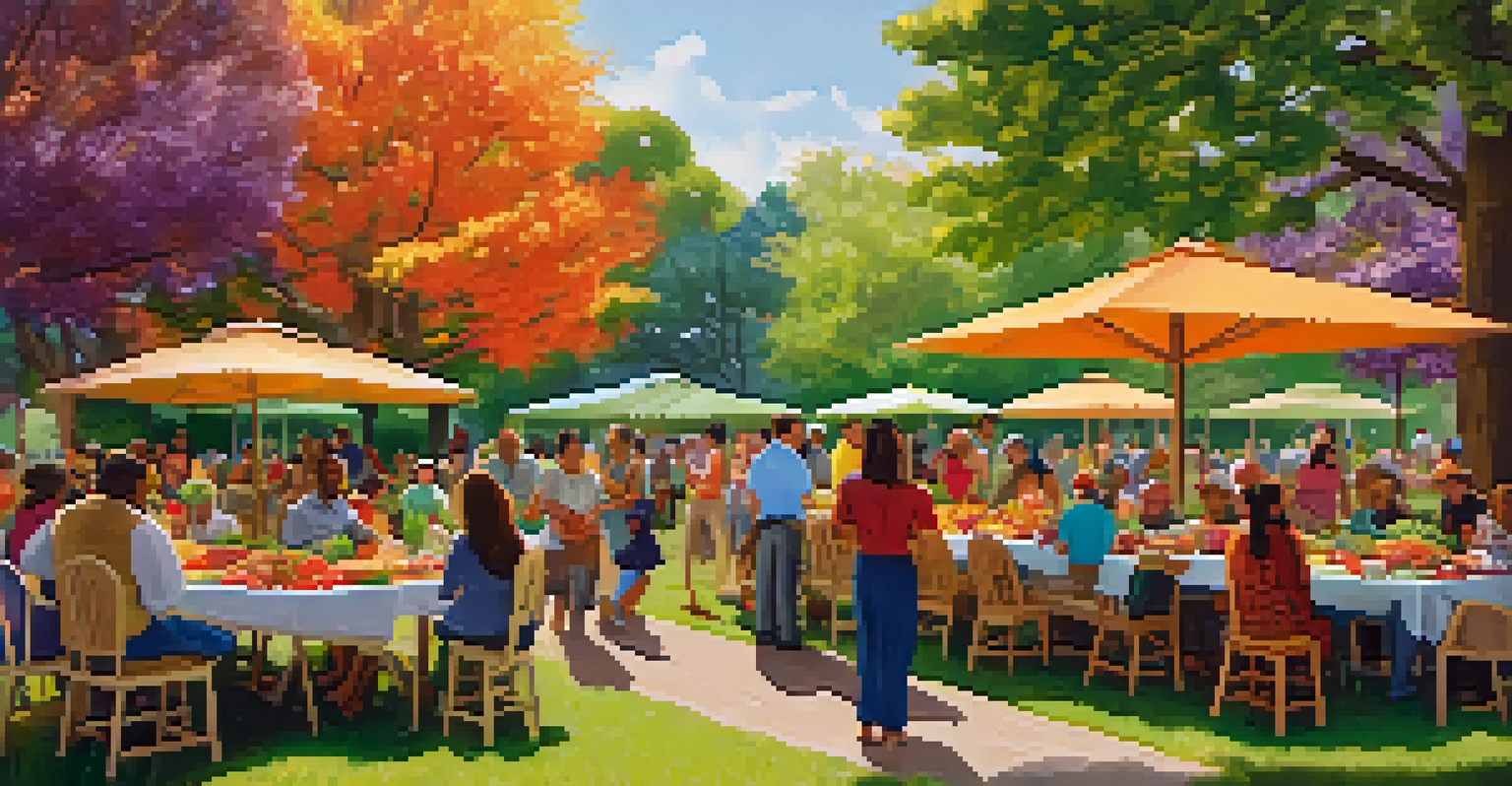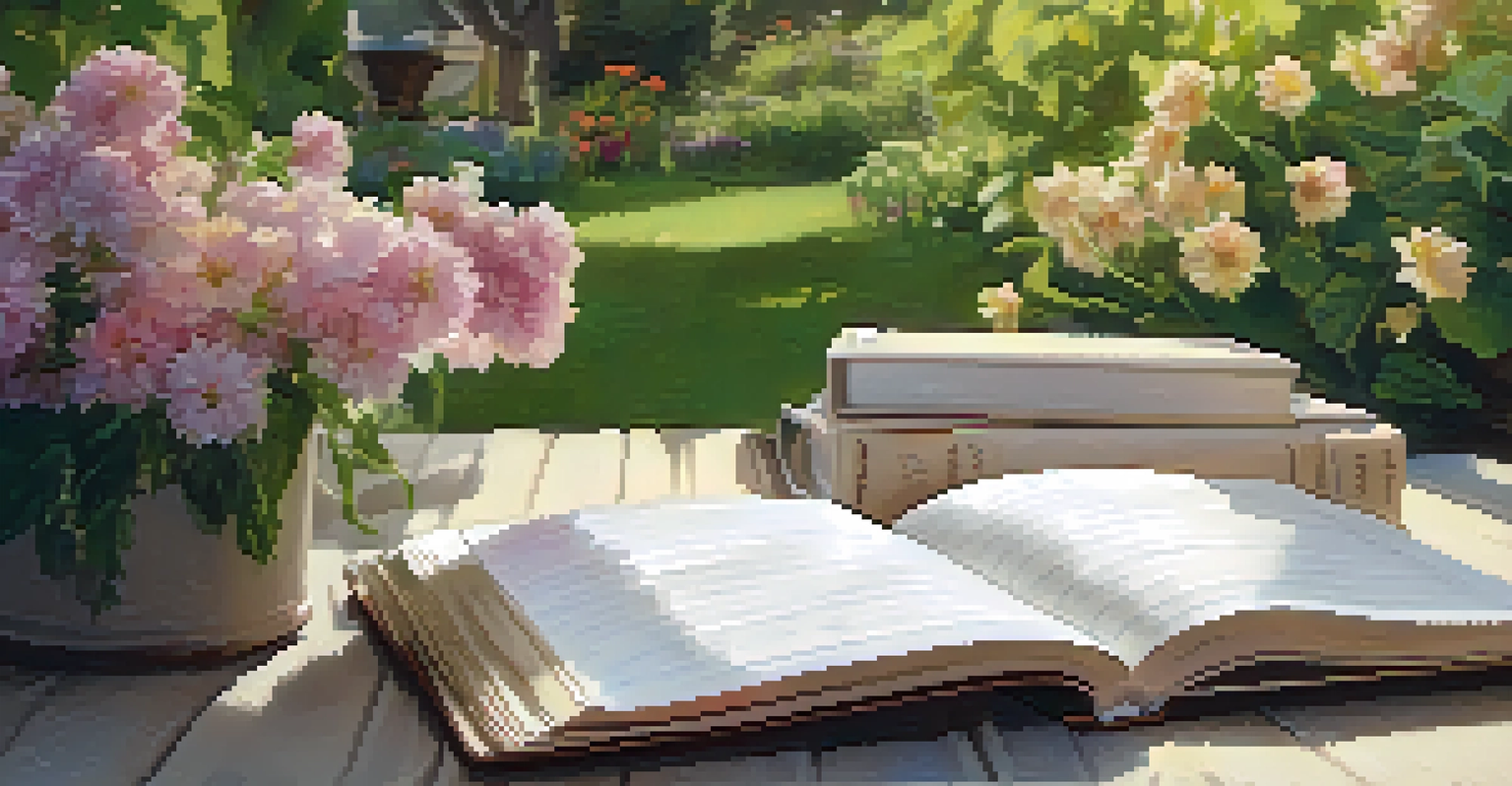Sacred Rituals: Connecting Spirituality with Environmental Care

Understanding Sacred Rituals and Their Importance
Sacred rituals have been a part of human history for centuries, serving as a bridge between the spiritual and the physical. They often involve ceremonies that honor nature, seasons, and the elements, reflecting a deep respect for the environment. By engaging in these practices, individuals create a sense of belonging to something larger than themselves, fostering a connection to the Earth.
We do not inherit the earth from our ancestors; we borrow it from our children.
These rituals can range from simple acts, like lighting a candle for peace, to elaborate ceremonies involving dance and song. Each act is a reminder of our interconnectedness with nature and the cycles of life. When we participate in these rituals, we are not just observers; we become active participants in nurturing the planet.
Moreover, sacred rituals often encourage mindfulness and gratitude, prompting individuals to reflect on their impact on the environment. This reflection can inspire more sustainable lifestyles, as people begin to recognize the importance of caring for the Earth as a sacred duty.
The Role of Nature in Spiritual Practices
Nature has long been a source of inspiration for spiritual practices across various cultures. From ancient civilizations to modern-day communities, the natural world provides symbols and metaphors that resonate deeply with spiritual beliefs. For instance, a river may symbolize the flow of life, while mountains can represent strength and stability.

Many spiritual traditions incorporate elements of nature into their rituals, using items like water, fire, earth, and air to connect participants with the divine. These elements serve as reminders of the Earth’s gifts and encourage a sense of stewardship. By recognizing these connections, individuals can cultivate a more profound respect for the environment.
Sacred Rituals Foster Connection
Engaging in sacred rituals nurtures a sense of belonging and interconnectedness with the Earth.
Furthermore, spending time in nature can enhance spiritual experiences, allowing individuals to feel a sense of peace and grounding. This connection can motivate people to protect and preserve the beauty and resources of the planet, making environmental care a natural extension of their spiritual practice.
Indigenous Practices: A Model for Environmental Care
Indigenous cultures around the world have long recognized the sacredness of nature, integrating this belief into their daily lives. Their rituals often celebrate the Earth and its resources, emphasizing a harmonious relationship with the environment. For example, many Native American tribes hold ceremonies to honor the changing seasons and the animals they depend on for sustenance.
The greatest threat to our planet is the belief that someone else will save it.
These practices serve as a model for modern society, illustrating how spirituality and environmental stewardship can coexist. By observing and learning from Indigenous rituals, individuals can gain insights into sustainable living and the importance of preserving biodiversity. This wisdom, rooted in centuries of experience, can guide contemporary efforts to combat environmental challenges.
Moreover, these rituals often involve community participation, reinforcing the idea that caring for the Earth is a collective responsibility. When people come together to celebrate nature, they foster a sense of unity and purpose, encouraging a communal approach to environmental care.
Rituals of Gratitude: Acknowledging Nature's Gifts
Gratitude rituals are a powerful way to cultivate appreciation for the natural world. Simple acts like saying thanks before a meal can remind us of the resources we often take for granted. By acknowledging the plants and animals that provide for us, we foster a deeper connection to the environment.
These rituals can be personalized, ranging from creating a gratitude journal focused on nature to participating in community clean-up events. Each act of gratitude reinforces our relationship with the Earth and highlights the importance of caring for our surroundings. When we express gratitude, we also inspire others to recognize and appreciate the beauty of the world around them.
Nature Inspires Spiritual Practices
Elements of nature serve as powerful symbols in spiritual rituals, encouraging environmental stewardship.
Incorporating gratitude into daily life encourages mindfulness and can lead to more sustainable choices. As we become more aware of our impact on the environment, we are motivated to make changes that benefit both ourselves and the planet.
Seasonal Rituals: Celebrating Nature's Cycles
Seasonal rituals serve as a reminder of the Earth's natural rhythms and cycles. Celebrating the changing seasons—such as solstices and equinoxes—can deepen our connection to the environment. These events provide an opportunity to reflect on the year’s passing, acknowledging the growth and decay that occur in nature.
For instance, many cultures hold harvest festivals to give thanks for the bounty of the earth. These celebrations not only honor the food we receive but also reinforce the importance of sustainable farming practices. By recognizing the effort that goes into producing food, we become more conscious consumers.
Engaging in seasonal rituals can also foster a sense of community, as people come together to celebrate shared values. This communal aspect strengthens the bond between individuals and their environment, encouraging collective action toward environmental care.
Personal Rituals: Creating Your Connection to Nature
Personal rituals can be tailored to fit individual beliefs and lifestyles, allowing anyone to connect spiritually with the environment. From morning meditations in a garden to evening walks in nature, these practices can enhance our appreciation for the world around us. Creating a personal ritual invites us to slow down and reflect on our relationship with nature.
Incorporating elements like mindfulness or intention-setting can amplify the impact of these rituals. For example, taking a moment to breathe deeply while observing the beauty of a sunset can evoke feelings of gratitude and peace. This simple act can remind us of the importance of nurturing our surroundings.
Community and Gratitude in Rituals
Participating in communal rituals of gratitude enhances appreciation for nature and inspires collective care for the environment.
Additionally, personal rituals can inspire others to explore their own connections with nature. Sharing these practices with friends and family can lead to meaningful conversations about environmental responsibility and encourage a collective commitment to sustainability.
Moving Forward: Integrating Spirituality and Environmental Care
As we move forward in an increasingly complex world, integrating spirituality with environmental care is more important than ever. This connection invites us to view the Earth not just as a resource, but as a sacred entity deserving of respect and protection. By recognizing this relationship, we can foster a culture of sustainability that honors both our spiritual and environmental responsibilities.
Communities can benefit from incorporating rituals and practices that promote environmental stewardship. Workshops, community gardens, and nature-based events can create opportunities for individuals to engage with both their spirituality and the natural world. This integration can lead to a more profound commitment to caring for the Earth.

Ultimately, the journey of connecting spirituality with environmental care is personal and collective. By embracing sacred rituals and practices, we can inspire a more sustainable future—one that honors the intricate tapestry of life on our planet.